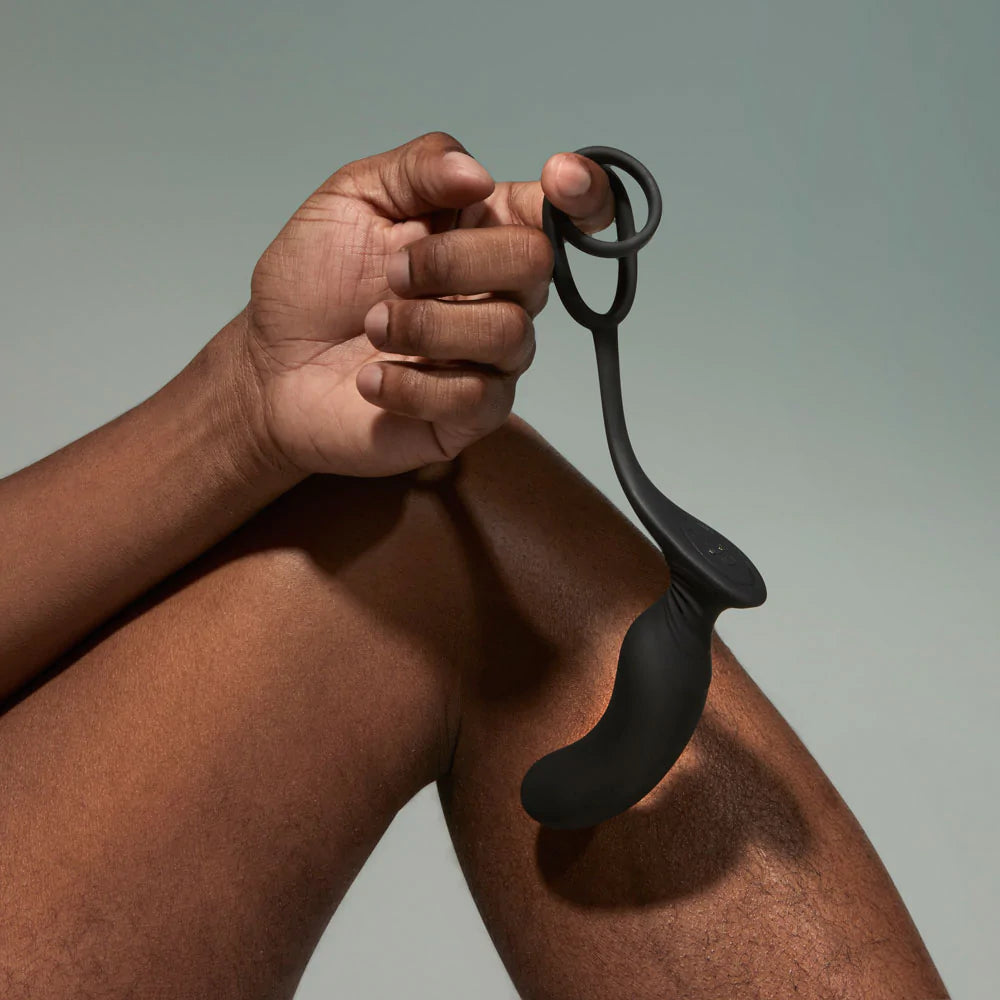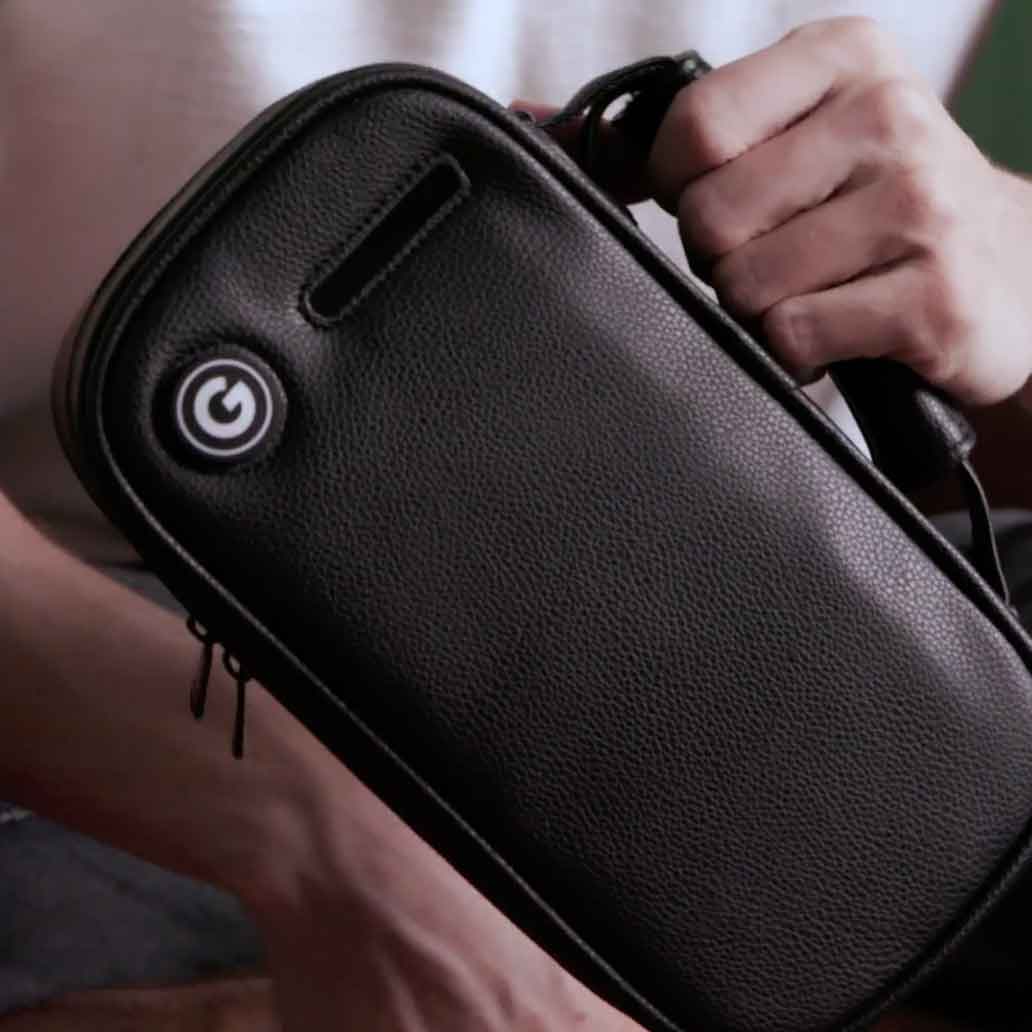Get our Beginner's Guide to Prostate Massage and 15% off your order.
Achieving Multiple Orgasms Through Prostate Massage
Are you tired of the one-and-done? Or perhaps you’re looking for more longevity in your bed sessions? If you’re a prostate owner or have a partner who has one, you’ve probably wondered what the buzz is about hitting the “P-spot” (aka the male equivalent of the female G-spot).
While penile orgasms are fantastic, that’s not the only pleasure route for prostate owners. The prostate, when stimulated, can create mind-blowing full-body prostate orgasms that push the boundaries of what male pleasure can be.
At GIDDI, we want to make sure that you fully understand the opportunities you can have in the bedroom. If you are curious about expanding your sexual experiences or sexual encounters, read onward, brave explorers!
Getting to Know Your Prostate

First things first: the prostate gland plays a critical role in orgasms and is very important to understand if you want to experience multiple orgasms. Once prostate play is introduced, a massage could hold host to multiple events of orgasms.
The prostate, or the “P-spot,” is right behind the bladder and right in front of the rectum. This walnut-sized gland is wrapped around the urethra and its closeness to the rectum.
The prostate is the main producer of the prostatic fluid or the fluid that feeds and carries sperm cells. After sperm are produced, the sperm will combine with the fluid creating the generally white and milky sperm.
Prostate orgasms have been known to have a distinct difference from orgasms through stimulation of the penis alone. In fact, many folx have mentioned that prostate orgasms are considerably more full-bodied.
What is a Prostate Orgasm?
A prostate orgasm, or “prostate milking,” is a form of prostate stimulation. Today, prostate milking refers to the sexual stimulation of the prostate, while prostate massage refers to both sexual or therapeutic stimulation of the prostate.
FYI: It’s not called prostate “milking” because the ejaculate looks like milk, but the movement that is used. Just like milking a cow requires manual manipulation of the udder.
It is also important to note that while massaging the prostate produces a thin fluid called prostate fluid, many penis-having folks report having intense multiple orgasms without a single drop of semen.
Boosting Prostate Stimulation

There are quite a few ways to stimulate the prostate, whether internally or externally and with or without a partner. Interested in what toys and tools can help bolster your bedroom experiences with prostate stimulation? Now’s the time to invest in a prostate massager.
By introducing or exploring further P-spot stimulation,prostate milking could hold host to multiple orgasms through “getting to the source” of where semen may come from.
Direct contact with this sensitive gland could fast-track orgasms, dry or wet, virtually leaving the rest of the penis untouched (unless you want to).
Who Can Have a Prostate Orgasm?
Anyone and everyone with a prostate! Regardless of sexual orientation, prostate stimulation may be considered as something only older males do at their doctor’s recommendation.
However, it can be enjoyed and considered extremely gratifying at any age.
Penis owners interested in having a prostate orgasm do so by massaging the gland through the anterior rectal wall accessed via the anus. You can use your fingers or other sex tools and gently rub on the perineum, the sweet spot behind the scrotum and down towards the anus.
How Do You Experience Multiple Orgasms?
According to a recent study, researchers found that 10% of males in their 20s and less than seven percent after the age of 30 experience multiple orgasms.
For the majority of men to have multiple orgasms, they must exercise their pubococcygeus muscle, or PC muscle, which helps control urine flow, contracts during orgasm, and aids in male ejaculation.
To strengthen these muscles, one must practice kegel exercises. These exercises, coupled with recognizing "the point of no return."
But did you know that prostate stimulation could lead to multiple orgasms, virtually ignoring the refractory period and even orgasming without the characteristic milky-white residue for penis-having folx?
The refractory period is one of the biggest problems for the penis & prostate-having folx out there. But what is the refractory period, you ask?
Scientifically, the refractory period is the window of time after climaxing where the body, or the genitalia, reels from the experience before it is ready to go again.
Sometimes your body needs a break – and there’s no need to rush to the next climax.
Traditionally during the refractory period, your body becomes harder to rile after orgasm. The muscles relax, the blood starts to flow to the rest of your body, and studies have shown that certain chemicals the body might release decrease sexual arousal.
Worry not, though. If you are a fan of sperm, we can help you find a way to keep that in the mix.
At GIDDI, we want to give you a place to look as you please while you indulge in the possibilities of prostate stimulation. Trust us; we don't mind if you have to come again and again. To be honest, we are looking forward to it.
The Mission Can Be Successful Without Ejaculation

Before we dive into techniques, one thing to know is the difference between an orgasm and ejaculation. In a sense, they are one-in-the-same, yes, but you can have one without the other.
Aside from the intensity of the orgasms they can produce, prostate orgasms can occur without ejaculation – a phenomenon known as “dry orgasm” – which does not deliver the same refractory period that prohibits penis-owners from orgasming again. The feeling and the novel build-up and climax are all there, but nothing will come out.
Learning how to orgasm without ejaculating may hold the key to multiple orgasms.
According to nutrition researcher Kamal Patel, ejaculation releases a biochemical called prolactin. Regarding this study, once prolactin is released into the system, penile or vaginal, sexual arousal dramatically decreases.
In other words, you can keep going all night long with prostate milking.
If you prefer to keep the pop-off part of the experience, try looking into ways to decrease the refractory period, such as your diet, exercise, prostate massage or even neurological practices.
Edging: Does It Actually Help?
Now, this may seem counter-intuitive, but hear us out. The act of getting close but not crossing the finish line can work in your favor if you are shooting for a new record.
So let’s talk about edging.
Edging, simply put, is the process where one is close to climaxing, and then once they are just about to orgasm, they apply single or multiple techniques to stop themselves from finishing.
You might be asking yourself, “Why would I restrict myself from one of the best parts of sex?” The answer to that question lies in ejaculation.
Edging has been known to help with discerning the orgasm from the act of ejaculation. Tracing back to the refractory period, if one restricts themself from ejaculating, you can trick your body into thinking you are still sexually aroused.
This study mentions that when it comes to those who achieved multiple orgasms felt as though they had control over getting there without actually having the semen evidence to show for it.
Knowing where your body can or cannot go during sex will inch you one step closer to not only multiple orgasms but also potentially longer sex.
Would Exercise Help Boost Orgasms?

Another option for multiple orgasms may be training the specific genital area itself. This training can be non-sexual and could fit somewhere snug in your schedule with a quick exercise or two.
Kegel exercises are not exclusive to those with vaginas. Strengthening the pelvic floor can benefit all who decide to give it a try. For penis-having folx, pelvic muscles are linked to urination, ejaculation, and pressure.
Taking some time out in your day to get those pelvic muscles fit could help you better control what happens during an orgasm.
Here is a list of beginner exercises you might be interested in trying:
- Practice contracting the pelvic muscles, especially the perineum (or better known as the taint)
- Bridges with emphasis on the Kegel squeeze
How Do Testosterone Levels Play A Role?
Another chemical to keep in mind is the hormone testosterone. Testosterone acts as a regulatory hormone linked to sexual reproductive systems and can hold host to occurrences like:
- Facial or pubic hair growth
- Voice alteration
- Muscle strength and density
- Libido (sex drive)
Testosterone is also linked to sexual behavior. Optimizing testosterone levels may shorten the refractory window allowing for another go-round if one ejaculates.
If you are curious about this option, speak with your doctor about finding ways to produce testosterone through diet or other means in a healthy way.
Is Prostate Stimulation Right For You?

At GIDDI, we understand the challenges of achieving multiple orgasms through prostate stimulation alone. But with a few helpful tips and tools, you’ll be on your way to a pleasure-filled adventure to P-town.
Not sure which of our award-winning toys is right for you? Take this quiz to help us find the perfect toy for you!
Sources:
Multiple Orgasms in Men–What We Know So Far | NIH
How does the prostate work? - InformedHealth.org | NCBI Bookshelf
A step-by-step guide to performing Kegel exercises | Harvard Health
The 4-3-2 Method for Kegel Exercises - Bruce Bridgeman, Steven G. Roberts, 2010 | SagePub
Normal male sexual function: emphasis on orgasm and ejaculation | PMC











